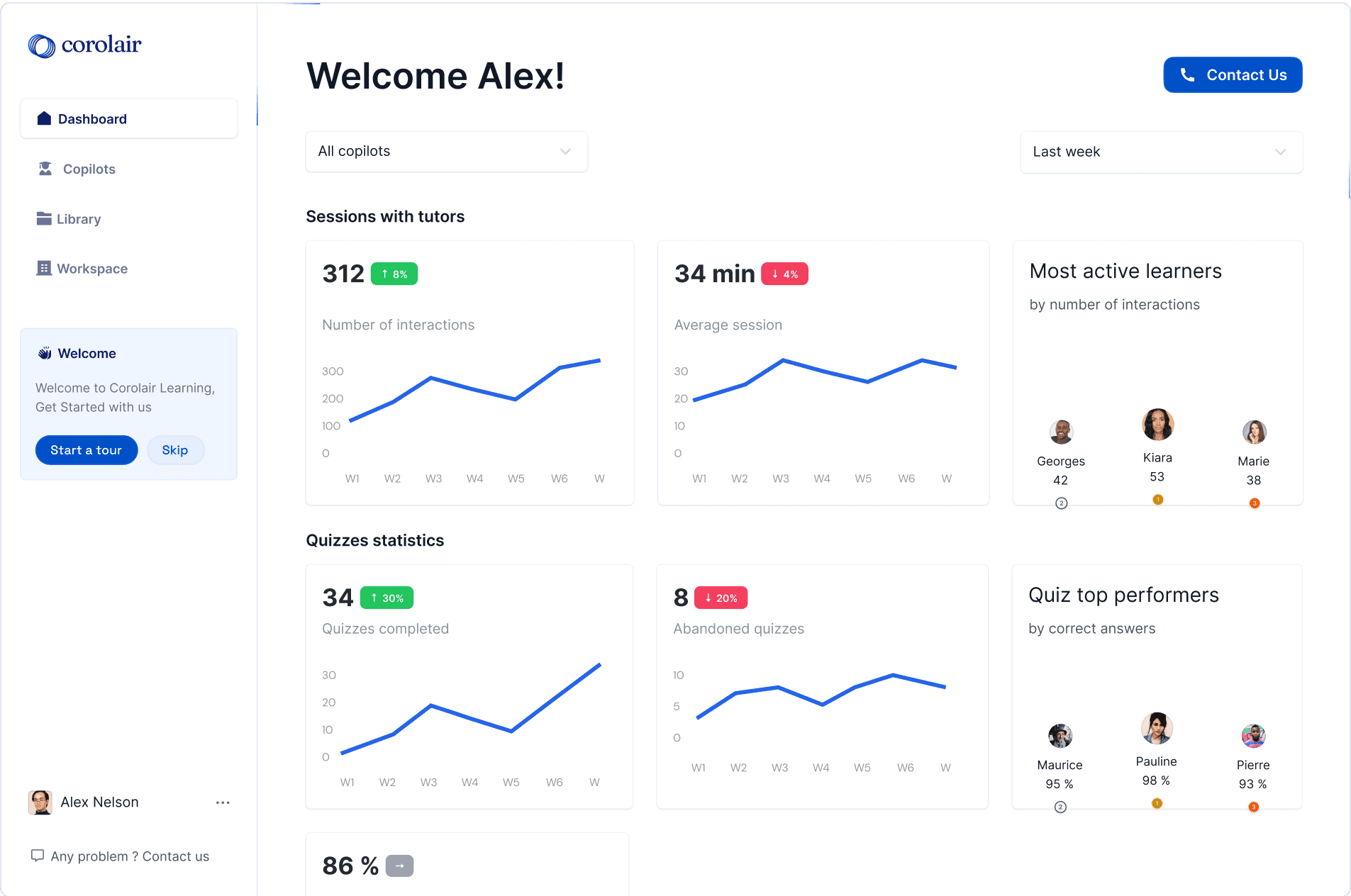All Articles
Generative AI and Education

Nov 3, 2023
Wassym Kalouache
Our journey began under the banner of Papagaio, the Portuguese term for a parrot. It was our firm belief that the path to comprehension was through repetition, much like a parrot repeating the words spoken around it. We were convinced that by constantly repeating facts, theories, and concepts, learners could engrave them onto their memory and, as a result, better understand them. However, our understanding of effective learning evolved as we discovered there were more comprehensive and efficient ways to learn and truly grasp concepts.
Introduction to Bloom's Taxonomy: A Comprehensive Learning Framework
Our perspective shifted significantly when we stumbled upon Bloom's Taxonomy, a hierarchical model used to classify educational learning objectives. This taxonomy proposed a nuanced view of learning, dividing it into six levels of complexity: remembering, understanding, applying, analyzing, evaluating, and creating. Each level represented a different facet of the learning process, offering a broader and more intricate perspective on understanding concepts than our initial 'parrot-like' repetition approach.
Bloom's Taxonomy in Practice: Personalized Learning Experiences
In practical terms, Bloom's taxonomy allows educators to design and tailor learning experiences targeting each level of this taxonomy. Let's consider a math class scenario. A teacher could start by asking students to remember multiplication tables. As the learners grow comfortable with this 'remembering' level, the teacher progresses them to applying the tables to solve mathematical problems. The journey doesn't stop there; the learners advance to evaluating their solutions and those of their peers.
This practical approach to Bloom's taxonomy can be incorporated into AI-driven educational tools, like a language learning application. The app, initially, assists users in remembering basic vocabulary. As the learners gain confidence, the app transitions to helping them understand and apply grammar rules in conversation. Users can then move on to analyze their language use, evaluate their progress, and eventually, construct their own sentences and paragraphs.
Bloom's Taxonomy and AI-Powered Education: Navigating the Learning Journey
Bloom's taxonomy is more than just a theoretical construct; it's a potent tool for structuring effective learning experiences. This taxonomy can greatly benefit both traditional classroom settings and innovative AI-powered educational platforms. By deconstructing educational objectives into six distinct levels, teachers and app developers can facilitate learners in building their knowledge and skills. The structured, step-wise approach of Bloom's taxonomy ensures learners gain a thorough and meaningful understanding of the concepts they're studying.
Use Case 1: AI Tutors for Personalized Instruction
At Corolair, we leverage generative AI to create AI Tutors, a cutting-edge solution for personalized learning. These virtual tutors work round-the-clock, providing instant explanations to student queries, thereby eliminating the waiting time for teacher feedback. AI Tutors can identify learning gaps in real-time and offer targeted practice problems to aid mastery of challenging concepts. As a result, students can engage in self-paced learning, leading to a deeper understanding and long-term retention of knowledge. AI Tutors, thus, transform the traditional classroom experience into a customized journey tailored to each learner's unique pace and needs.
Use Case 2: Enhanced Lesson Planning
Another application of generative AI at Corolair is in lesson planning. Our AI-driven tool helps educators design effective lesson plans, addressing the diverse needs of their students. This tool uses data about each student's current understanding level, learning style, and pace to create a personalized lesson plan. By incorporating the principles of Bloom's taxonomy, our AI can suggest activities and materials that cater to different learning objectives, from remembering facts to creating original ideas. This personalized approach makes learning more engaging and productive, enhancing the overall teaching effectiveness.
Use Case 3: Customized Assessments
The third major use case of generative AI at Corolair is in the creation of customized assessments. Traditional one-size-fits-all assessments often fail to accurately gauge a learner's understanding and mastery of a subject. To overcome this, our AI tool generates adaptive assessments that match a student's learning progress. These assessments dynamically adjust the difficulty level and the nature of the questions based on a student's previous performance. This approach ensures a more comprehensive evaluation of the learner's understanding, providing valuable feedback for both the learner and the educator.
In Conclusion: The Evolution of Learning with Corolair
Our journey from Papagaio to Corolair demonstrates an evolution in understanding learning strategies. We started with a singular, parrot-like approach of repetition but grew to incorporate a nuanced, structured method that emphasized understanding at multiple levels. Bloom's taxonomy helped us transform the way we view education and learning, allowing us to create a more effective, multi-dimensional learning experience for our users. In essence, Corolair's growth reflects the shift from simple repetition to comprehensive understanding, paving the way for a more effective, fulfilling learning journey. In conclusion, generative AI, with its myriad applications, can greatly enhance pedagogy, making it more individualized, engaging, and effective. At Corolair, we are dedicated to leveraging this potential to transform the educational landscape.



